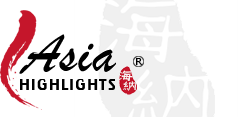In recent years, Japanese cuisine has been on the up and up, becoming more and more popular. It is strongly reflected in Tokyo, one of the world's most exciting dining destinations.
Tokyo features a wide range of both local and regional Japanese cuisine, in addition to all types of international fare. Good value for every budget, ranging from cheap hole-in-the-wall joints to expensive high-class restaurants, with everything in between, can be found all around the city.
Highlights
- Tokyo's top restaurants have accrued more Michelin stars than Paris and New York combined.
- The Tsukiji Fish Market is the biggest and busiest fish market in the world.
- Tipping is not common in Tokyo.
- There are over 160,000 restaurants in Tokyo.
- There are no open container laws (regulating the existence of open containers of alcohol) in Japan and alcoholic beverages may be consumed in public places.
Flavors of Tokyo
Tokyo has naturally exerted great influence on Japanese cuisine, as it has served as Japan's political center for over four centuries. Consequently, some of the city's specialties have become so popular that they are now known as the standard version of the dish rather than a local specialty. The city is most famous for its seafood.
The local cuisine of Tokyo was shaped over a period of 400 years in and around the flourishing Edo period (1603-1867). A lot of the food served in restaurants represents the general Japanese cuisine that uses common ingredients such as Japanese rice, shoyu, dashi, mirin, and miso.
In Tokyo, there is so much more to eat than just sushi and ramen. From rarefied kaiseki and French haute cuisine to hearty izakaya taverns and mom-and-pop diners, the sheer variety will leave you in awe.
Discover real reviews of Highlights Travel Family's best-rated service across trusted platforms.

 
|
Honeymoon Planning 2025
I worked with Bert and he was super helpful in helping me plan a honeymoon trip to Japan. I have wanted to visit Japan for a really long time but the idea of planning a whole trip and taking in all Japan has to offer sounded like a huge amount of work and research. This planning experience took all those nerves away. I got both a summery of the trip and very detailed review of all the places on the itinerary. They have multiple ways to communicate, I choose to communicate by email. Bert was very professional and polite. Quick responses and follow up emails were sent to keep me on track with planning. More
, Apr 2024
|
Customized Trip Planning
My experience with Alisa at Asia Highlights has been excellent. I wanted to customize my trip to South Korea and Japan. I made several changes and asked many questions which she answered promptly. My trip included only hotels and transportation because I wanted to explore on my own. This gave me the option to book my own tours if I want. I selected Asia Highlights because of the great reviews and booked because Alisa was helpful in planning my trip. More
JBC, Feb 2024
|
Japan Tour
Alisa did a fantastic job, answering all my questions and catering to what I want for our upcoming Japan tour. The itinerary was so detailed! We are so excited for our trip! More
Theresa Beltran, Feb 2024
|
Tokyo Specialties and Popular Dishes
Tokyo is a good place to enjoy local and regional Japanese food from all across the country, which has been available in Tokyo since the Edo period. Here are some specialties you have to try out when you visit Tokyo.
Nigiri-Zushi
When Japanese cuisine is mentioned, sushi is the first thing that comes to mind. But as you know, there are different kinds of sushi. Nigiri sushi or more correctly, "Nigiri-zushi," is the most popular type of sushi today.
This consists of an oblong mound of sushi rice which is pressed between the palms of the hands to form an oval-shaped ball, and a topping, most commonly tuna, shrimp, eel, squid, octopus or fried egg, draped over the ball. A small piece of wasabi can be placed underneath the fish.
This type of sushi can be eaten by hand. Pick up the nigiri zushi with your hands and only dip the fish side of the sushi on the shoyu (soy sauce), and not the rice. Then eat it all in one bite.
Tempura
Tempura is a piece of lightly battered, deep-fried seafood or vegetable. It was introduced to Japan during the 16th century by the Portuguese in Nagasaki. Since then, tempura has developed over the centuries into a popular Japanese dish both inside and outside of Japan.
The dish can be found in many restaurants across the country, where it is commonly served as a main dish, side dish or topping for tendon rice bowls, or udon and soba noodle dishes. Tempura can be made from shrimp, fish, eggplant, mushrooms, pumpkin, or sweet potato.
Soba Noodles
Soba noodles are made of buckwheat flour, approximately as thick as spaghetti, and prepared in various hot and cold dishes. These dishes are very popular and easily available internationally. The noodles tend to be brittle; so many restaurants add some wheat flour to make them more flexible.
Many soba dishes are eaten all year round, while others are only available seasonally. The most common soba dish is the mori soba, which is boiled. Cold soba noodles are eaten with a soya based dipping sauce or tsuyu. Toshikoshi Soba is a special soba dish which is only eaten on New Year's Eve as a symbol of longevity.
Ramen Noodles
Ramen is a noodle soup dish that was originally imported from China and in recent decades has become one of the most popular dishes in Japan. Ramen restaurants, or ramen-ya, can be found on almost every corner in the country and produce countless regional variations of the dish.
Ramen are typically categorized according to their soup base. The most common are shoyu ramen soup, a clear, brown broth flavored with soy sauce; shio ramen soup, a light, clear broth seasoned with salt; miso ramen soup, flavored with soybean paste; and tonkotsu ramen, made from pork bones which have been boiled until they dissolve into a cloudy white broth.
Chankonabe
Chankonabe is a stew commonly eaten in vast quantities by sumo wrestlers as part of a weight-gain diet. It is also a popular restaurant food, often served in restaurants operated by retired sumo wrestlers who specialize in the dish.
The dish usually contains a dashi or chicken broth soup base, mixed with sake or mirin to add flavor. It is not made according to a fixed recipe and often contains whatever is available to the cook.
The main ingredients are humongous quantities of protein sources such as chicken, fish, tofu, or sometimes beef, plus vegetables.
While considered a reasonably healthy dish, chankonabe is very protein-rich and usually served in massive quantities, accompanied by beer and rice to increase the caloric intake.
Monjayaki
Monjayaki is a kind of pan-fried pancake. It is similar to okonomiyaki, but uses different liquid ingredients. The ingredients in monjayaki such as sliced cabbage and small pieces of seafood and meat are finely chopped and mixed into the batter before frying.
Yakitori
Yakitori is Japanese-style skewered chicken. It is prepared by skewering the meat with kushi which is a skewer typically made of steel, bamboo, or similar materials. Afterwards, the chicken is grilled over a charcoal fire. During or after cooking, the meat is typically seasoned with tare sauce or salt.
Yakitori is not limited to specialty shops. It is readily found on the menus of izakaya all across Japan and is sold pre-cooked, in frozen vacuum packs, or even canned.
Casual Dining in Tokyo
Restaurants of all kinds can be found throughout Tokyo. Whether you're looking for cheap or fine dining, you can find it. Restaurants for casual dining are no exception.
There are some good spots serving Japanese cuisine to international diners. These restaurants can be found around train stations, entertainment districts and the restaurant floors of most department stores.
Shinjuku
Omoide Yokocho is a small network of alleyways on the northwest side of Shinjuku Station, filled with dozens of tiny eateries. They mostly serve yakitori, but also ramen, soba or kushiyaki.
Many of them consist of just a small counter and can seat fewer than a dozen diners. There are also some larger ones that have a couple of tables and/or a second floor.
Shibuya
Shibuya is one of Tokyo's top destinations for visitors and locals alike and a beacon of youth culture and entertainment. This area offers everything from shopping and karaoke to cool bars and lively nightclubs.
Restaurants around the area mainly serve foods that are eaten by groups of people. The specialties served include seafood and Japanese barbeque, called yakitori.
Ginza
Ginza is a world-famous entertainment district in Tokyo celebrated for its high-end shopping and location right next to the famous Tsukiji Fish Market. Its proximity to Tsukiji and its sheer number of restaurants means you can always find fresh, excellent sushi there.
Although the area is famous for fine traditional Japanese cuisine and Michelin-star restaurants, Ginza also has mid-range cafes and casual restaurants for the more conservative diner. Ramen and hot pot are the best choices.
Asakusa
Asakusa is a 70-80 meter long street west of Sensoji Temple, lined with izakaya (informal Japanese pubs) that exude a nostalgic charm. It has the nickname "Hoppy Street", named after a popular alcoholic drink sold in the area. The restaurants there typically serve beef tendon stew and other sharable dishes that go well with drinks.
Explore Tokyo's Food with Asia Highlights
Japanese cuisine is not only characterized by sushi and tempura, but accommodates a much bigger variety. Discover its delicacies with a local guide.
First, head to Yurakucho to relax with a beer and a grilled chicken skewer or yakitori. Enjoy two yakitori of your own choice and have a drink in a typical yakitori establishment.
Next, head to Tsukishima, an area filled with small businesses and eateries just across the river from Tsukiji market. You will see many retro restaurants along its street offering monjayaki, a dish consisting of flour and vegetable batter with different toppings cooked on a hot plate right in front of you, and eaten with small iron spatulas.
At the end of the dinner, your guide can either drop you off at an izakaya (Japanese pub) in central Tokyo, where you can order yourself some drinks, or take you back to your hotel.
Why Asia Highlights (10,000+ reviews & 98.8% 5-star rating)
- Save Your Time:
- Less research, more enjoyment!
- Real-time 1V1 expert planning
- Maximize Your Flexibility:
- Personal local guide and ride
- Explore at your own pace
- Celebrate Your Journeys:
- Specially-crafted family adventures
- Celebrate milestones with style!
Get Inspired with Some Popular Itineraries
At Asia Highlights, we create your kind of journey — your dates, your destinations, at your pace. You can have any trip tailor made for your travel.

